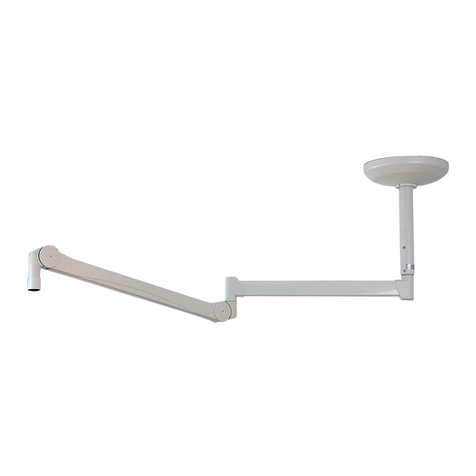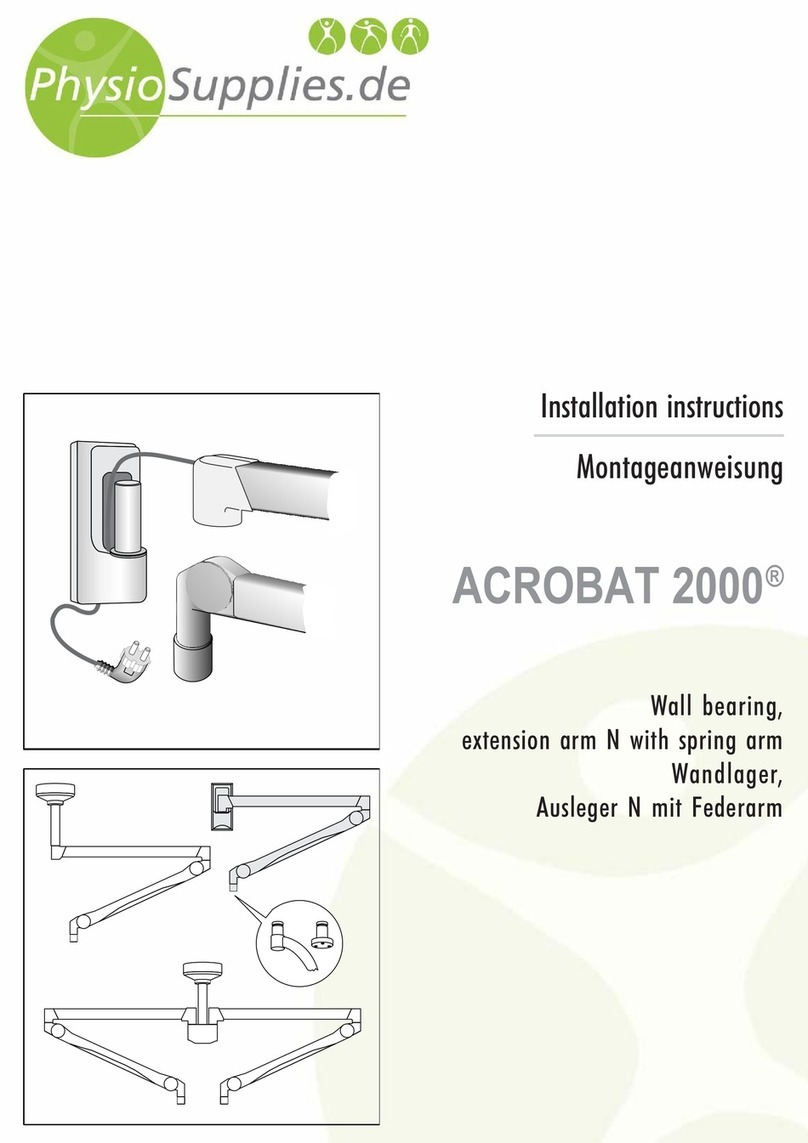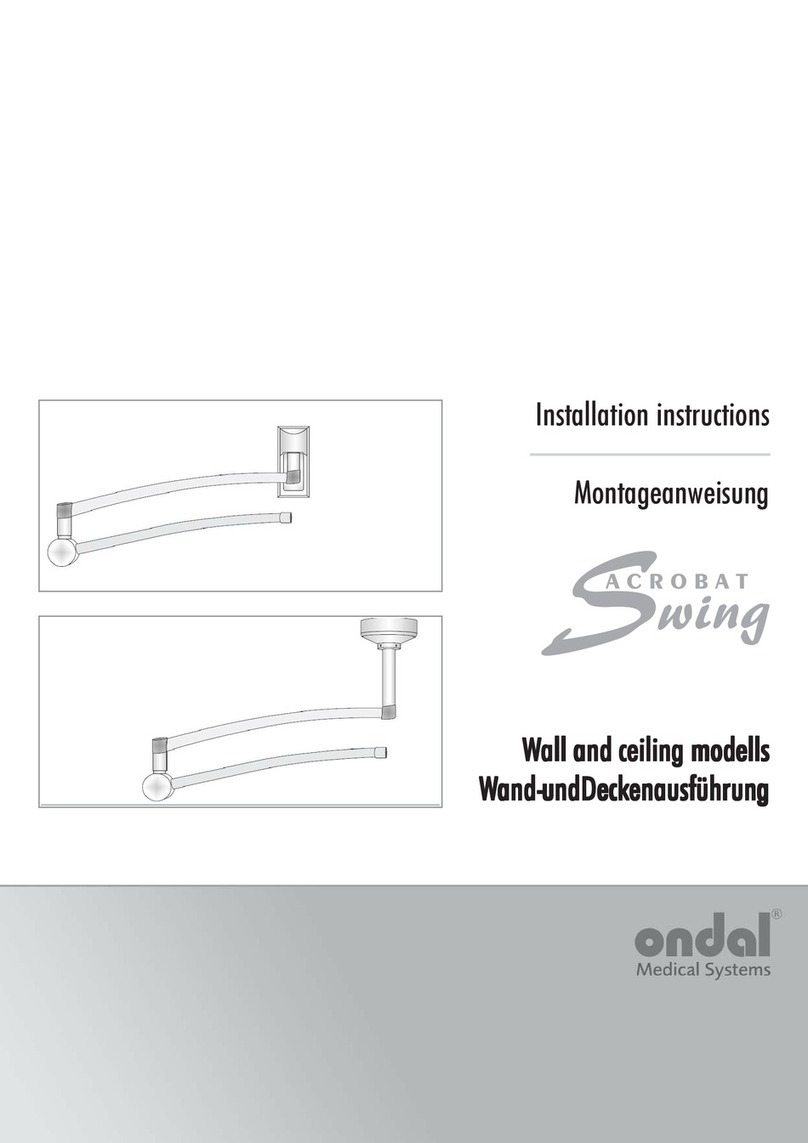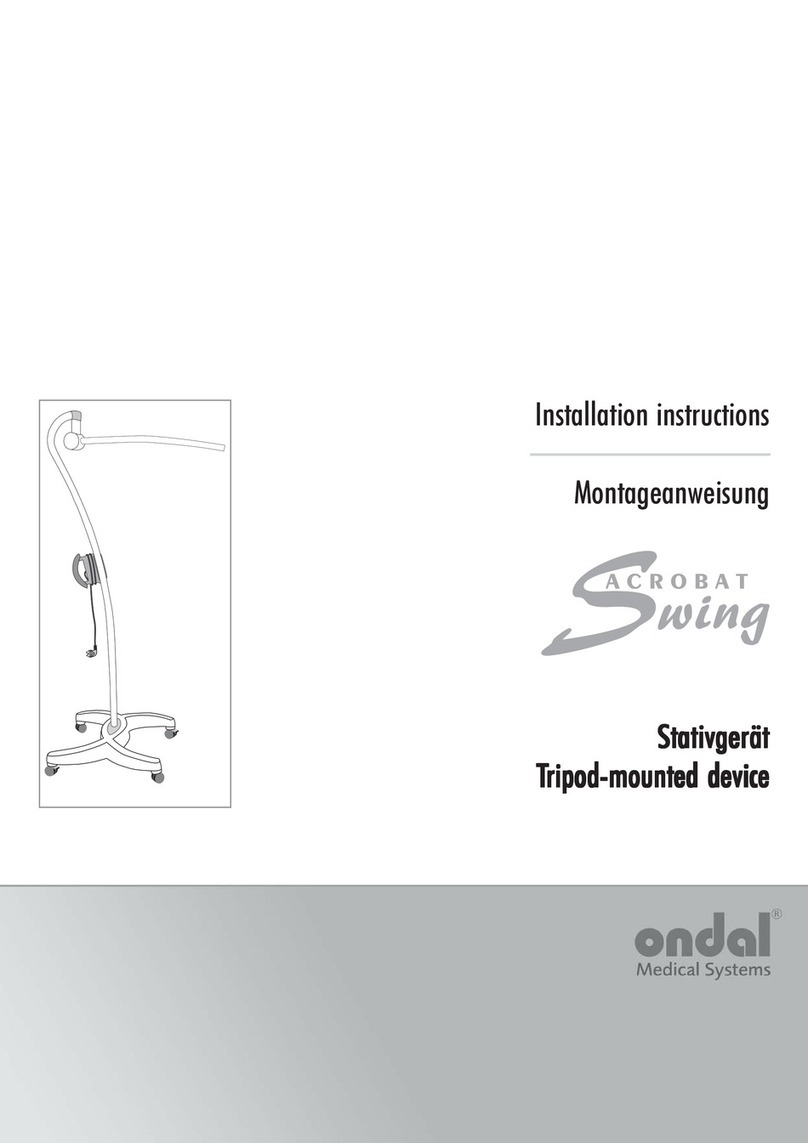
Seite / Page 8
38 628 / 03 - 2006
DeutschEnglish Figure / Abbildung
Figure / Abbildung 7
1 Black rubber ring
Schwarzen Gummiring
2 Sleeve
Hülse
3 Slot
Schlitze
4 End device
Endgerät
5 Retaining segment
Sicherungssegment
6 Groove
Nut
7 Locking plate
Verriegelungslasche
1
2
5
3
64
180°
7
m
>
10°
6 Endgerät
montieren
6.1 Variante für Endgeräte
mit 1-3kg Gewicht Abb. 7
HINWEIS:
Das Endgerät darf nicht mehr als
3 kg wiegen.
1. Netzstecker ziehen und gegen
Wiedereinstecken sichern.
2. Schutzkappe aus der Feder-
armöffnung nehmen.
3. Schwarzen Gummiring (1)
auf sicheren Sitz prüfen, die-
ser muß fest hinter den 4 Nop-
pen in der Hülse (2) sitzen.
4. Kunststoffhülse (2) so auf
den Federarm schieben, daß
die beiden Schlitze (3) zur
Deckung kommen.
WARNUNG -
Verletzungsgefahr:
Der nach unten gedrückte Fe-
derarm kann hochschnellen
und zu Verletzungen führen.
Während der Montage des End-
gerätes dürfen sich keine Per-
sonen im Schwenkbereich des
Federarmes aufhalten.
5. Endgerät (4) einschieben und
Sicherungssegment (5) voll-
ständig in den Schlitz (3) ein-
stecken, so daß das Siche-
rungssegment in der Nut (6)
geführt wird.
6. Hülse (2) um 180- Grad drehen,
bis ein hörbares Klicken erfolgt.
7. Sicheren Sitz des Endgerä-
tes (4) prüfen.
VORSICHT-
Schäden am Gerät:
Nach der Montage des Endge-
rätes Kipptest gemäß DIN EN
60601-1 durchführen.
6 Mounting the
end-device
6.1 Variant for end devices
with 1-3kg weight Fig. 7
NOTE:
The end-device should not weigh
more than 3 kg.
1. Pull out the mains plug and
secure it from being inserted
again.
2. Take out the protective cover
from the spring arm opening.
3. Check the black rubber ring
(1) for secure seating, it must
be seated firmly behind the 4
knobs in the sleeve (2).
4. Push the plastic sleeve (2)
onto the spring arm in such a
way that the two slots (3) are
covered.
WARNING-
Danger of injury:
The spring arm, pressed down-
ward, can jump upward and cau-
se injury. During the installati-
on of the end-device, nobody
should be present within swive-
ling range of the spring arm.
5. Push in the end-device (4)
and the retaining segment
(5) completely in the slot (3),
so that the retaining segment
is guided in the groove (6).
6. Rotate the sleeve (2) through
180 degrees, till there is an
audible click.
7. Check the firm seating of the
end-device (4).
CAUTION-
Damage to the equipment:
After the end-device has been in-
stalled, perform tilt test in accor-
dance with DIN EN 60601-1.
































